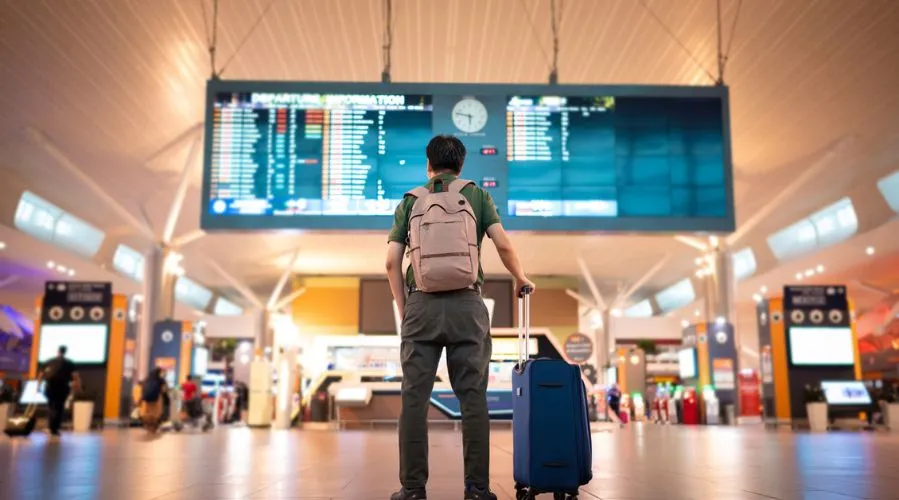When applying for a Schengen Visa, one of the most important documents you’ll need to provide is a flight itinerary. This document helps consular officials confirm your travel plans, ensuring that you intend to return to the United States (U.S.) before your visa expires. You may also come across other terms, such as a dummy ticket, flight reservation, or air ticket booking—all essentially mean the same thing: proof of your travel itinerary.
Here’s everything you need to know about getting a flight itinerary for your Schengen Visa application, without needing to purchase a full-priced airline ticket upfront.
What is a Flight Itinerary for a Schengen Visa?
A flight itinerary is a detailed document showing your planned round-trip flights to and from the Schengen Area. This document provides proof to visa officials that you have scheduled travel within the permitted timeframe and do not plan to overstay. It is different from an actual purchased ticket—you don’t need to pay for the full flight at this stage.
How Do I Get a Flight Itinerary for My Visa Application?
You don’t need to purchase an actual ticket when applying for a Schengen Visa, which helps you avoid the risk of losing money if your visa is denied. Instead, there are several ways to get a flight itinerary or reservation:
1. Reserve a Flight Through an Airline or Travel Agency
Many airlines and travel agencies offer options to hold or reserve a flight itinerary for a small fee. These reservations usually include essential details like flight numbers, dates, and times, which are required for your visa application. Depending on the airline, they may hold the reservation for 48 hours to a week.
2. Use a Local Travel Agent
A trusted local travel agent can help reserve a flight for you, often charging a small fee for this service (typically 10% of the full price). The benefit of using a travel agent is that they can usually hold your reservation for up to a week or more, giving you ample time to apply for your visa.
3. Book Through Online Booking Websites
Some online booking platforms allow you to hold a flight itinerary for up to 48 hours without requiring full payment. This can be a useful option if you’re looking for flexibility during your application process. Be sure to check the terms and conditions to confirm the hold policy.
4. Request a Dummy Ticket
A dummy flight ticket is another commonly used option for Schengen Visa applications. Some airlines and travel agents provide a dummy itinerary with a reservation number and flight details without charging the full fare. However, these typically require a small fee.
5. Look for Refundable Tickets or Visa Refusal Guarantees
If you’re confident in obtaining your Schengen Visa, you might choose to purchase a fully refundable ticket. Some airlines even offer visa refusal guarantees, meaning that they will refund your ticket cost if your visa application is denied, even on non-refundable tickets.
What Information Should a Flight Itinerary Include?
To ensure that your flight itinerary meets the Schengen Visa requirements, the following details must be clearly listed on the document:
- Passenger’s full name
- Flight numbers of the chosen airline(s)
- Reservation number or booking reference
- Departure and return dates (round-trip flights are mandatory)
- Flight times
- Airport IATA codes (e.g., JFK for New York, CDG for Paris)
- Total price of the ticket (optional for some consulates)
It’s important that your itinerary aligns with your travel dates and purpose, as inconsistent information could result in a visa rejection.
What Are My Next Steps?
Once you have your flight itinerary ready, submit it with the rest of your Schengen Visa application documents. Remember, this is just one part of the full documentation you’ll need to provide, which also includes a completed application form, proof of accommodation, and most importantly, Schengen travel insurance.
Why Schengen travel insurance is a Must
In addition to your flight itinerary, you must provide Schengen travel insurance that meets the minimum coverage of €30,000 (Around $33,000 USD) for medical emergencies, including hospitalization, accidents, and repatriation. Without the right travel insurance, your visa application won’t be approved.
AXA Schengen travel insurance plans are designed to meet the specific needs of Schengen Visa applicants. We offer flexible coverage starting from $50,000, which exceeds the required minimum. With AXA, you also benefit from:
- Up to $100,000 in medical expenses
- Up to $500 for dental emergencies
- Medical evacuation and repatriation of remains
- 24/7 assistance during your trip
You can purchase your AXA Schengen travel insurance online in just a few minutes, and download your certificate immediately—ready to submit with your visa application.
Final Tips
When applying for your Schengen Visa:
- Ensure your flight itinerary is consistent with your travel dates.
- Consider using a dummy ticket or flight reservation instead of a fully paid ticket to avoid the risk of losing money if your visa is denied.
- Always purchase Schengen travel insurance to ensure your application is complete and compliant with the visa requirements.
AXA Schengen travel insurance

Essential
The AXA Schengen Essential offers cost-effective coverage for your trip to Europe. With up to $50,000 in medical protection, it helps you stay prepared for the unexpected. Whether you’re traveling for leisure, business, or require a Schengen visa, it meets all official requirements and offers protections across all countries in the Schengen Area.

Advantage
The AXA Schengen Advantage offers flexible protection for your trip to Europe. With up to $100,000 in medical coverage, it offers higher coverage limits as you travel across all Schengen Area countries.

Annual
The AXA Schengen Annual provides coverage for all your trips to Europe throughout the year. With up to $100,000 in medical coverage, it is ideal for frequent travelers and multiple-entry Schengen visa holders.

